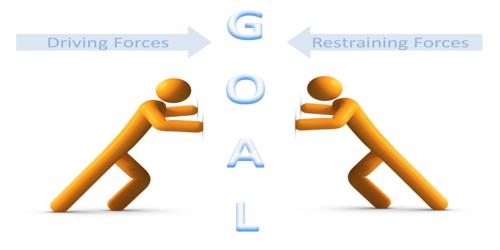Driving Forces
Key internal forces (such as knowledge and competence of management and workforce) and external forces (such as the economy, competitors, technology) that trigger the change of strategy in an organization. Industry conditions change because important forces (the most dominant ones that have the biggest influence on what kinds of changes will take place in the industry’s structure and competitive environment) are driving industry participants (competitors, customers, or suppliers) to alter their actions, and thus the driving forces in an industry are the major underlying causes of changing industry and competitive conditions. Driving forces analysis has two steps: identifying what the driving forces are and assessing the impact they will have on the industry. The internal and external factors that persuade the decisions and policies an organization makes to keep on competitive. Internal forces include core capabilities, employee turnover, product, and technological innovation; external forces include economic conditions, competition, demographic changes, technological evolution, social trends, local and national politics, and environmental issues.
Many forces can affect an industry powerfully enough to qualify as driving forces. Some are unique and specific to a particular industry situation, but most drivers of change fall into one of the following categories:
- The Internet and new e-commerce opportunities and threats it breeds in the industry;
- Increasing globalization of the industry;
- Changes in the long-run industry growth rate;
- Changes in who buys the products and how they use it.
- Product innovation;
- Technological change;
- Market innovation;
- Entry or exit of major firms;
- Diffusion of technical know-how across more companies and more countries;
- Changes in cost and efficiency,
- Growing buyer for preferences for differentiated products instead of a commodity product (or for a more standardized product instead of strongly differentiated products);
- Regulatory influences and government policy changes;
- Changing societal concerns; attitudes, and lifestyles;
- Reductions in uncertainty and business risk.














